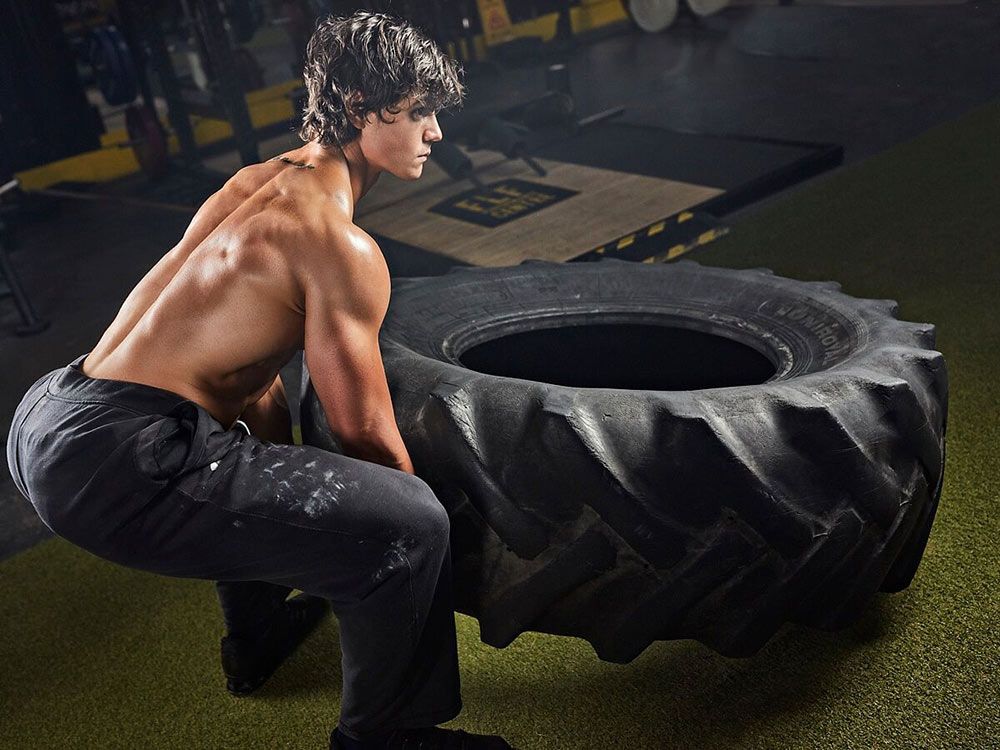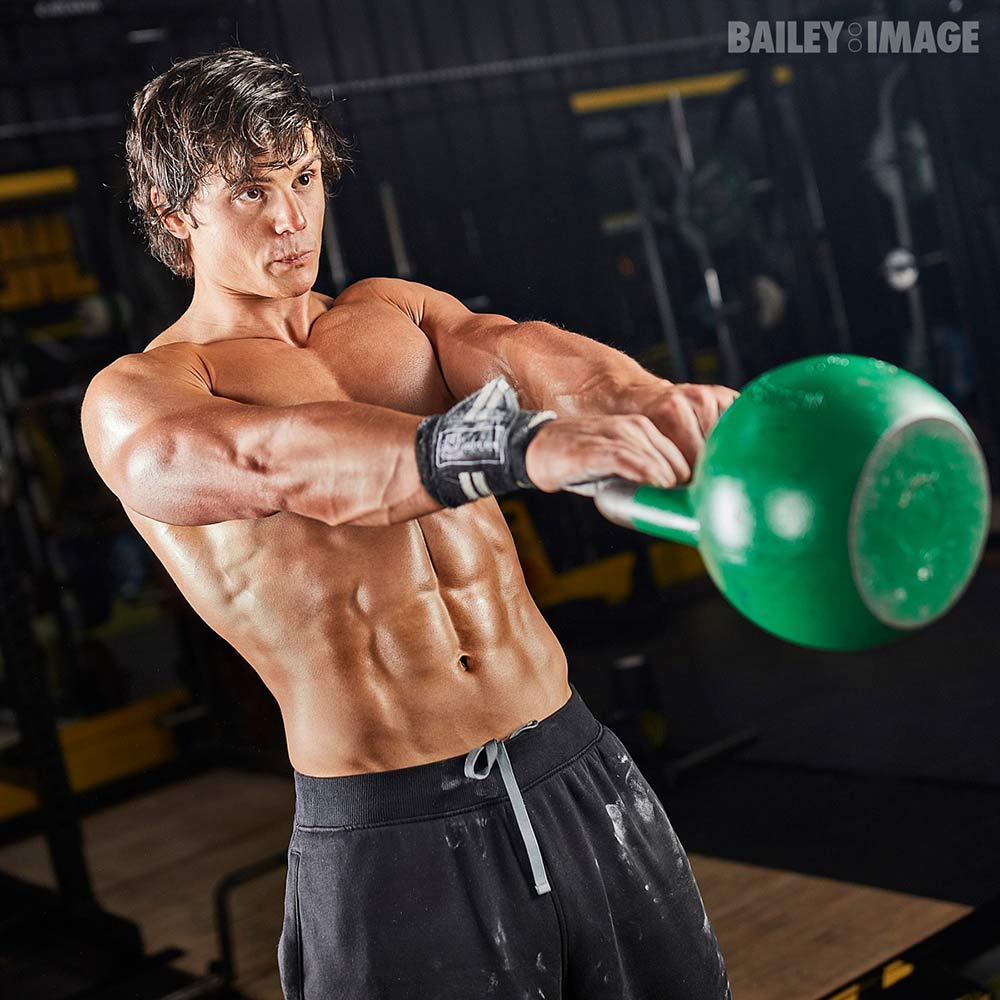
Ultimate Conditioning
When training for strength and size you should never overlook the importance of staying in excellent condition. You may think that high intensity conditioning compromises your gains from weight training, This is untrue.
Body fat levels are very much reliant on nutrition and calorie intake. Keeping challenging, smartly programmed conditioning work in your training plan is a sure fire way to building a strong, lean physique which is as fit as it looks.
“Great body, but what can you do with it?”
Aesthetics will get you noticed, performance will help you win. Although a big chest and chiselled abs look great, they don’t count for much if you get out of breath running a mile. A common misconception in the pursuit of muscle and strength is that cardio is your enemy. This is far from true. Cardio, or energy systems work, can turn you from average joe to captain America when done properly and appropriately.
First things first
The scope of this article will all be about conditioning, however prior to starting I must first touch on nutrition. To reduce body fat levels, you need to be in a calorie deficit. You can do this through reducing intake (food) or increasing output (training). If your goal is to get leaner and you’re not paying any attention to your diet, you are neglecting an extremely useful tool that is readily at your disposal. For more information on eating for your goal, check out the article “nutritional foundations”.
Good Conditioning Vs Bad Conditioning
Good conditioning in my eyes is something thats specific, challenging and measurable. It complements your workout, acts as assistance work, trains different energy systems and can be beaten next workout.
Say you have just completed a heavy deadlift session when your main lift consisted of doing 3 sets of 3 at 85% 1RM (for more info, check out the article “Training for Strength). You’ve completed 2 assistance exercises of 10-15 reps for 3-4 sets. You now need something to finish the session that will contribute to increasing lifting numbers but get the abs popping as well.
The deadlift is very much a core movement. Weak core equals a weak deadlift. Here is an example of 3 exercises I would use for post deadlift conditioning with their reasoning.

A) Hanging Leg Raises
The lower abdominals are very important for stabilising the spine. Usually people will over emphasise upper abdominal development (through crunches) and forget to train this region properly. With this movement, focus on a quality muscle contraction on the way up (whilst breathing in), then slowly lowering the legs on the way down (whilst breathing out).
This movement is great for pelvic stability. This comes in very useful for getting out of the bottom of a squat and getting the bar off the floor when deadlifting. This movement is known as a high closing exercise as the contraction element of the exercise involves the knees being brought up to the chest and closing the angle at the hip.
B) Kettlebell Swings
Kettlebell swings are a fantastic exercise for both muscle development and conditioning. They’ll help you master hip hinging technique whilst taxing the lungs as well. The problem with heavy exercises is that they become increasingly dangerous the more fatiguing you get. With Kettlebell Swings, you have an excellent way of training the hamstrings, glutes and grip dynamically whilst challenging a more aerobic based energy system. This is good for fat loss.
I would recommend doing 20-30 reps with a Kettlebell weighing anywhere from 24-32kg. Synchronise your breathing so that you breathe in whilst swinging the kettle bell towards you and then exhaling whilst contracting the glutes and hamstrings.

C) Rower
So far in this series of exercises, we have an assistance movement in the form of hanging leg raises and a hinging movement to improve technique from the swings. We now need something to challenge aerobic capacity and yet be beaten week by week.
Rowing mimics a pulling motion, similar to deadlifting, and works the upper back in tandem. I would recommend doing a short burst where the goal is to complete a distance in a certain amount of time. By doing this, you’ll be able to monitor your fitness week by week and see if you are improving.
Putting it all together
- A) Hanging Leg Raise 3 x 10 reps.
- B) Kettlebell Swing 3 x 30 reps.
- C) Rower 3 x 500m for time.
- Rest 90-120 seconds, repeat.
This is very similar to Crossfit but neglects Olympic or compound lifts. I prefer this for conditioning as it reduces risk of injury and puts you in a much safer environment. The safer you are, the harder you can push yourself.
You can modify this type of workout to suit your own preferences, all you have to do is keep the back bone of your workout the same.
- A) Weak Muscle Assistance
- B) Main Lift Assistance
- C) High Intensity Conditioning for time
Examples
Squat Focus
- A) 45° Back Extension x 10
- B) Squat Jumps x 30
- C) Prowler x 40 metres
Bench Focus
- A) Standing Face Pull x 10
- B) Press Ups x 20
- C) Battle Rope Slams x 30
You can increase the weight week by week to make the circuit more challenging, however I would opt to play around with rest intervals for a more fat incinerating affect. Week 1 I would rest 120 seconds in between circuits, week 2 would drop to 105 seconds, week 3 90 seconds and so on. Keep everything the same, just subtract 15 seconds each week.
Wrapping it up
- Keep conditioning short. You don’t need to do anymore than 10-15 minutes after your main lifts.
- Keep it specific. Going for a 5 mile run won’t do much for your squat, building work capacity in your back and quads will.
- Keep it measurable. Have some form of exercise which you can look to beat each week. This will show direct improvement.
- Don’t be fooled. Conditioning will get you fit, nutrition will get you ripped.

